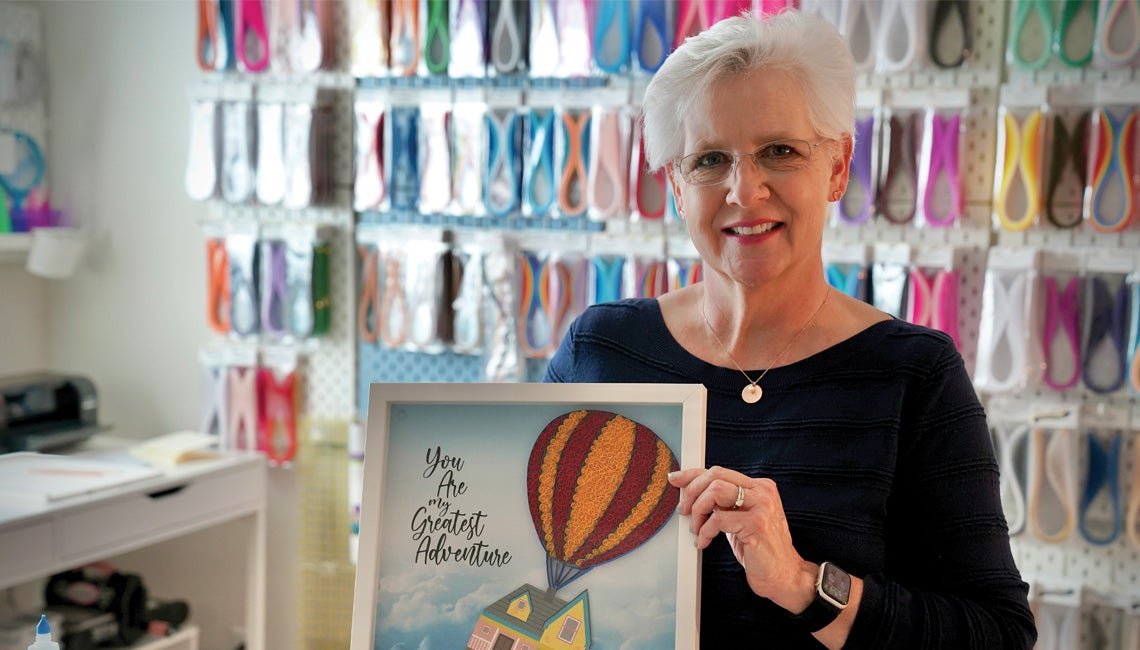Like many during COVID, Lillian Cooper and her mother, Clarissa, searched and searched for activities to do at home — all the better if they came upon an art form they hadn’t tried before.
Lillian already enjoyed doing origami (the Japanese art of paper-folding), so when she found the ancient art of quilling, also known as paper filigree, it seemed like something she could get into.
The Coopers, residents of Orient and members of Lancaster-based South Central Power Company, found a book about quilling at their local library, read online articles, and watched instructional videos on YouTube; that research solidified their interest, and they ordered the special paper and tools online.
Terri Riddle added quilling to her creative toolbox and enjoyed it so much, she began teaching classes in the ancient art.
Terri Riddle of Loveland, a painter who works mostly in oils and acrylics, got interested in quilling after her husband gave her a Cricut machine, which can cut paper in custom, specialized ways. Riddle had a project in mind, but realized she needed to learn quilling to finish the parts that the Cricut couldn’t handle — so she taught herself.
She finds quilling both satisfying and relaxing. “It’s a very beginner-friendly craft,” she says. “You can do it while watching TV, and the designs can be simple or more complex.”
Riddle, a member of the Deerfield Township Art Alliance, found she enjoys sharing quilling with other people, so she started teaching filigree classes in 2022. This year she’ll teach 30 or more classes at several locations.
Quilling has been practiced for centuries, perhaps even as far back as ancient Egypt, though it was particularly popular in Europe during the Renaissance. It takes its name from the tool its first practitioners used: a bird feather. To create a piece of quilling art, the artist threads one end of a strip of paper through a slit in the quill, the modern tool modeled after those feathers of old. Then, keeping even tension on the paper, the quill is spun or twirled so that the strip of paper coils tightly around it. One by one, each tiny coil is placed on edge and glued onto a piece of paper or within a frame.
Cooper says that the most challenging part is keeping the tension consistent on the paper coil. It’s not hard to learn, she says, “but you have to have some fine-motor skills.” She enjoys turning her quilling art into jewelry, such as pendants for necklaces or earrings.
Riddle, who has sold her paintings at art shows for years, now also sells her framed quilling work and greeting cards right alongside them.
These days Cooper, now 17 and a rising senior in high school, alternates quilling projects with other forms of art that she enjoys — crocheting, origami, amigurumi (crocheting stuffed animals), and wool felting among the favorites. She’s taken art classes at school and hopes to take more in college, and she’s already taught a class in quilling for adults, with her mom serving as her assistant.
Riddle says she meets many adults who say they aren’t creative, but people who take her classes are frequently surprised at what beautiful art they can make with quilling. “I always tell people,” she says, “you’re never too old or too young to learn.”










